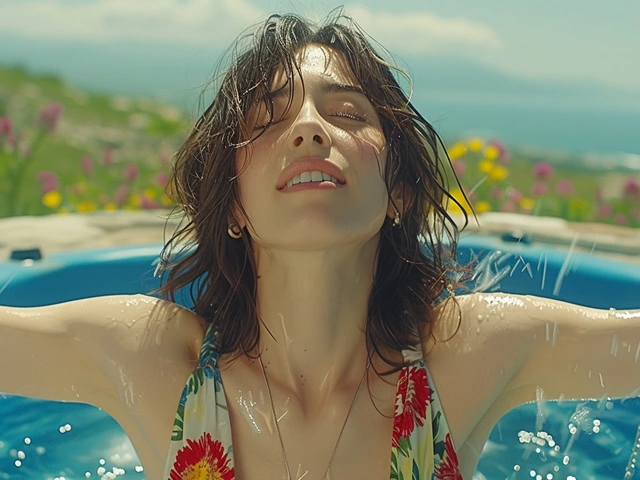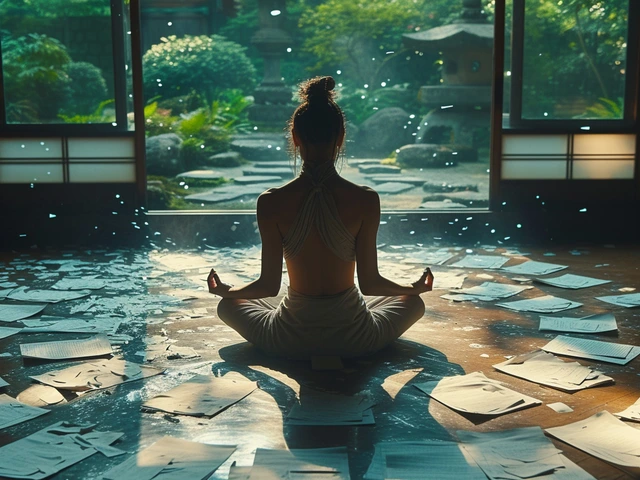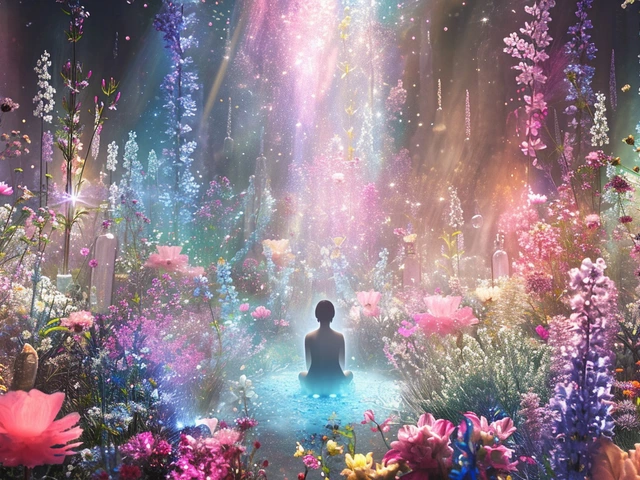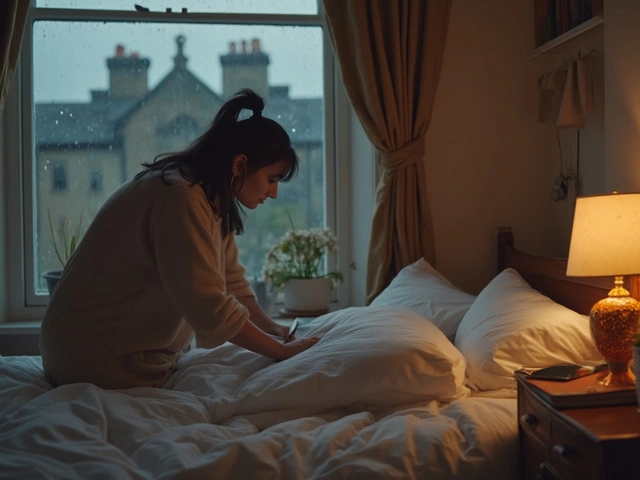In today's fast-paced world, it's easy to overlook the profound impact creative arts can have on our mental well-being. Recently, there has been a growing recognition that art is not just a source of entertainment or aesthetic pleasure but can also serve as a powerful tool for mental health treatment. Creative Arts Therapies encompass a range of expressive approaches, including music, dance, and visual arts, providing individuals an avenue to explore their emotions and experiences in a safe and non-judgmental environment.
Creative arts provide a unique opportunity for self-expression, particularly for those who may find it challenging to articulate their feelings through conventional means. By engaging in creativity, individuals can access deeper layers of their psyche, facilitating healing and personal growth. These therapies are increasingly being integrated into mainstream mental health practices due to their profound benefits. As more people share their success stories, the potential of creative arts therapies becomes a beacon of hope and innovation in mental wellness.
- The Concept of Creative Arts Therapies
- Historical Background and Evolution
- Different Forms and Techniques
- Benefits for Mental Health
- Success Stories and Real-life Applications
- How to Integrate These Therapies into Daily Life
The Concept of Creative Arts Therapies
Creative Arts Therapies represent a fascinating intersection between the world of art and the science of psychology. They offer a unique approach to healing that prioritizes self-expression and emotional exploration over verbal communication. This form of therapy integrates various artistic disciplines, such as music, dance, drama, and visual arts, to help individuals navigate complex emotions and experiences. By engaging in these creative processes, people can explore parts of their emotional and psychological landscape that may be difficult to access through traditional talk therapy alone. These therapies are not just a passive experience but an active journey where individuals create, reflect, and find meaning in their art, revealing insights into their mental health and emotional states.
At the heart of Creative Arts Therapies is the notion that art can be a healing process, not just a final product. When people create art, they are not merely producing something visual or auditory; they are also working through emotions and building resilience. This concept is pivotal because it suggests that the arts are not secondary to conventional forms of therapy but an essential complement that enriches and extends therapeutic possibilities. Many practitioners in this field hold that the act of creation itself is inherently beneficial. The focus shifts from 'what is made' to 'what is experienced during making', empowering individuals to tap into their creativity while simultaneously strengthening their confidence and sense of agency.
These therapies trace back to practices in the mid-20th century when psychologists and artists began to professionally collaborate, inspired by the idea that creative processes could enhance psychological well-being. Over time, professionals in this field have developed structured techniques and approaches tailored to various client needs, ranging from stress and anxiety reduction to trauma recovery. Research has shown that creative expression can lead to significant reductions in symptoms of depression and anxiety, suggesting it offers more than just temporary relief.
"Art evokes the mystery without which the world would not exist," said René Magritte, underscoring the power of art to tap into the otherwise concealed spheres of our emotional lives.
For mental health practitioners, incorporating creative arts into treatment regimens provides an additional layer of understanding and connection with clients. The non-verbal nature of art therapy can be particularly empowering for children, who often struggle to fully articulate their experiences in words. Adults, too, can benefit from the non-threatening nature of artistic expression, particularly those who have encountered trauma or significant life changes. The creation process offers them a tangible way to express complicated emotions and even facilitates cathartic breakthroughs.
Historical Background and Evolution
The journey of Creative Arts Therapies is as colorful and diverse as the art forms it embraces. The use of art as a therapeutic tool dates back to ancient times, when culture and healing were deeply intertwined. In the pre-modern era, rituals and artistic expressions played an integral role in communities, serving both as a form of storytelling and as a means to communicate with the divine. This practice of using art to affect the psyche laid the groundwork for modern creative arts therapies.
The formal recognition of these therapies began in the mid-20th century, when psychiatrists and social workers noticed the therapeutic effects that art could have on mental health patients. One of the pioneering moments in this evolution was the work of Margaret Naumburg, often considered the mother of art therapy. She introduced the concept of art as symbolic speech, an approach that aimed to reach the unconscious mind through expressive art. This methodology opened new avenues for patients to explore their emotions and experiences in a non-verbal way.
"Art can permeate the very deepest part of us where no words exist" - Eileen Miller
This period also saw the rise of music therapy, as figures like E. Thayer Gaston contributed significantly to its development. Gaston, known as the father of music therapy, helped establish the first educational programs, adding scientific rigor to what was once seen as a more mystical practice. Around the same time, dance therapy emerged as Marian Chace began using movement to connect body and mind, fostering emotional expression and healing through dance. Her work was particularly influential in institutions dealing with psychiatric disorders.
As research and practice expanded, the 1970s brought an explosion of interest in creative arts therapies. Organizations like the American Art Therapy Association and the American Music Therapy Association were established, creating formal structures and standards for practice. This organized community helped validate these therapies in the medical world, encouraging evidence-based research to further understand their benefits.
The conceptual evolution of these therapies continued into the 21st century, where technology began to influence practice. Digital tools and virtual reality started to play roles in therapy sessions, broadening the reach and accessibility of these creative healing practices. As digital art forms combined with traditional ones, therapists could offer more individualized and flexible treatments to suit a broad range of needs.
In recent years, mental wellness has become a core focus in global health discussions, with creative arts therapies being increasingly acknowledged within health care systems worldwide. Today, these therapies are recognized not only for their therapeutic merit but also for their ability to foster community, creativity, and empowerment among individuals. As the world continues to experience rapid change, these therapies offer timeless techniques to ground, heal, and help people thrive.
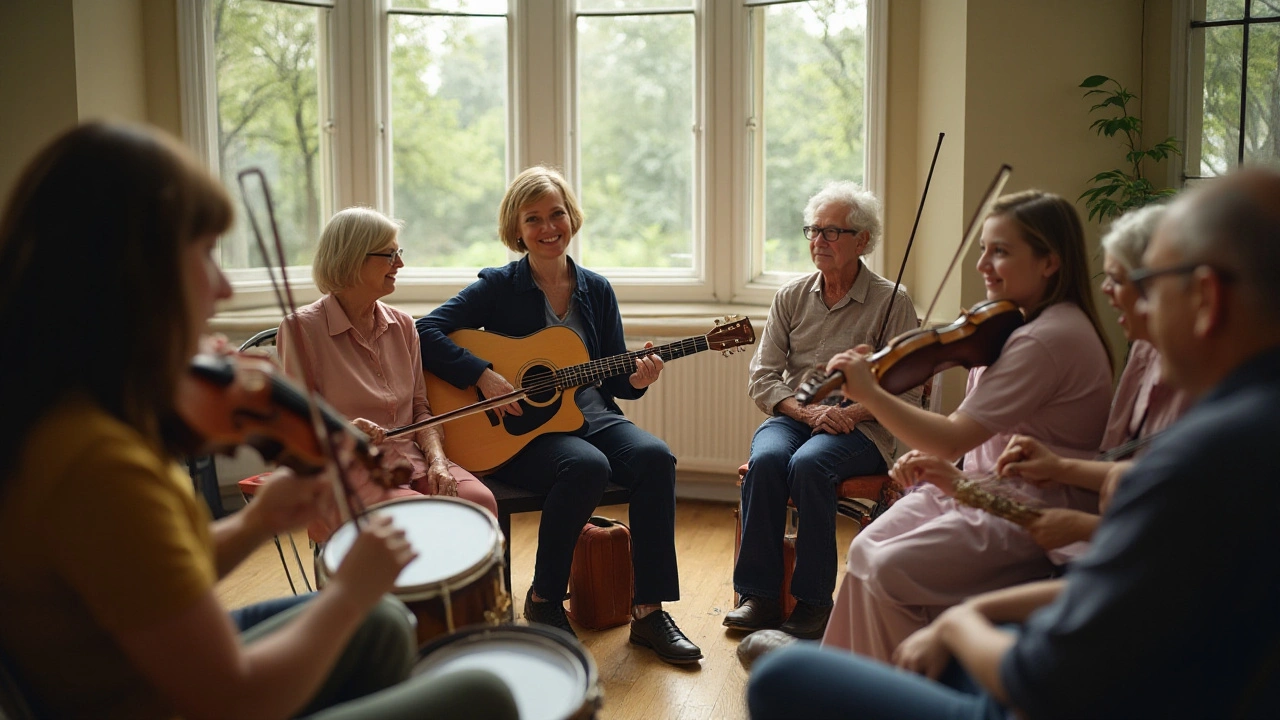
Different Forms and Techniques
Creative Arts Therapies encompass various approaches, each offering unique benefits for mental wellness. These therapies include modalities like music therapy, art therapy, dance/movement therapy, and drama therapy. Each form leverages a different artistic medium to help individuals articulate their emotions, explore their feelings, and process their experiences. These therapies are often tailored to meet the specific needs of individuals, and their flexibility allows them to be adapted to different settings and populations.
Music therapy involves using music and its elements such as rhythm, melody, and harmony to promote emotional expression and healing. This therapy can include listening to music, singing, playing instruments, or composing songs. It is particularly useful for individuals dealing with trauma, anxiety, or depression, as music can evoke powerful emotions and memories. According to the American Music Therapy Association, music therapy is an evidence-based approach that can enhance psychological well-being and improve cognitive functioning.
Similarly, art therapy employs the creative process of making art to improve mental health. Participants might engage in painting, drawing, or sculpting, allowing the art to serve as a visual representation of their inner world. This technique can be particularly helpful for those who find words insufficient to express complex emotions. It encourages individuals to explore their creativity, which can be a source of empowerment and self-discovery. Art therapy has been shown to reduce symptoms of stress and increase overall quality of life.
"Art enables us to find ourselves and lose ourselves at the same time," wrote Thomas Merton, highlighting the transformative power of creative expression.
Dance/movement therapy uses the body's movement as a method to improve mental and physical health. By embracing movement, individuals can release stress and channel their energy in positive ways. It's especially beneficial in supporting individuals with body image issues, anxiety, and PTSD. Research indicates that movement can help improve mood and encourage social interaction, as the physical activity promotes the release of endorphins and reduces cortisol levels.
Then there's drama therapy, which uses role-play, improvisation, and storytelling to help individuals explore emotional challenges. This approach allows people to act out scenarios, rehearsing new responses and coping strategies in a safe environment. Drama therapy is particularly effective for children and adolescents, as it leverages play as a natural form of learning and expression. By embodying different characters or narratives, individuals can gain new insights and perspectives, leading to meaningful personal transformation.
Each of these therapies can be tailored to suit group or individual needs, and practitioners often integrate multiple forms to create a comprehensive therapeutic experience. The beauty of Creative Arts Therapies lies in their ability to transcend traditional talk therapy, offering alternative pathways to mental wellness. With their growing popularity, these therapies are proving to be invaluable in the domain of mental health care.
Benefits for Mental Health
Creative Arts Therapies are much more than an eclectic collection of artistic endeavors. They come with a myriad of mental health benefits rooted in their ability to facilitate emotional expression in unique and profound ways. For many, speaking in a traditional therapy setting can be daunting. However, through the freedom of creativity, individuals find that they can communicate deep-seated feelings and emotions more vividly. This opens up opportunities for healing and self-discovery that might remain locked when only words are used.
Engaging in art-related activities, such as painting, dancing, or playing an instrument, triggers the brain's reward circuitry. This results in the production of neurotransmitters like dopamine, often referred to as the 'feel-good' hormone. The increase in dopamine not only elevates mood but also enhances focus, making creative arts therapies a powerful ally in managing conditions like depression and anxiety. The unstructured nature of art-making allows individuals to explore their thought processes, potentially leading to moments of insight that can spark personal transformation.
In addition to emotional benefits, creative arts can also have physical health implications. Engaging the body in movement-based therapies, such as dance, can improve cardiovascular health, flexibility, and coordination, simultaneously providing the mental release of stress and tension. As emphasized by the American Dance Therapy Association, dance therapy allows for the liberation of emotional energy, enabling individuals to build a stronger connection between mind and body.
"Dance/movement therapy can be a profound tool for emotional expression and social integration in an increasingly isolated world," said a spokesperson for the association.
The benefits of creative arts therapies extend beyond individual impact; they include community and societal-level advantages. Group art sessions foster a sense of belonging and community, which can be particularly therapeutic for individuals who feel isolated or disconnected. Through shared creative processes, people often develop a mutual understanding and empathy, strengthening social ties and reducing loneliness. These group dynamics can contribute to a reduction in stress levels and an increase in overall mental wellness, making these therapies a cornerstone in the pursuit of collective mental health.
Recent studies highlight the efficacy of creative arts therapies in treating post-traumatic stress disorder (PTSD), especially among veterans and trauma survivors. When words fail to capture the depth of trauma, expressive therapies offer a path to recovery, as individuals can visualize and externalize their experiences in a controlled and meaningful manner. This form of emotional storytelling can break the silence of suffering, providing a platform for healing and resilience. Data from the American Journal of Public Health reports a significant decrease in PTSD symptoms in veterans engaged in creative arts sessions.
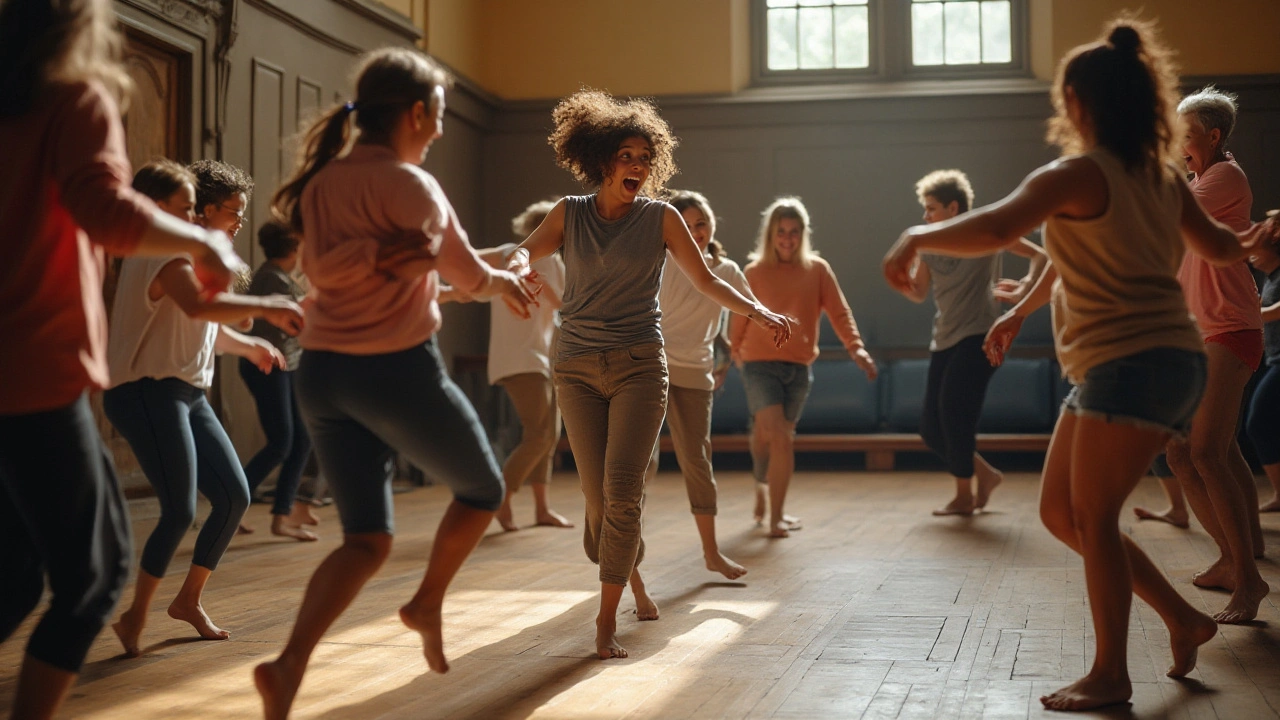
Success Stories and Real-life Applications
Creative Arts Therapies have been quietly transforming lives, providing individuals with new doors to healing. For many, these therapies become a lifeline, especially when traditional methods fall short. Take the case of Sarah, a teenager struggling with severe anxiety and depression. Initially hesitant about therapy, she found solace in a music therapy program. The safe environment allowed her to express her emotions unnoticed by words; the rhythmic beats echoed the chaos inside her and, gradually, helped restore harmony to her life. A few months into therapy, Sarah began to show remarkable improvements, her nights less plagued by anxiety, and her self-confidence blossoming.
In another powerful tale, we meet Robert, a war veteran grappling with PTSD. After trying a range of therapies with little success, he was introduced to art therapy. The seemingly simple act of painting provided an unexpected outlet, offering a tangible way to process the indescribable experiences of war. Over time, his canvas captured the unspoken struggles, giving voice to his pain, and helping him reclaim a sense of normalcy most assumed was lost forever. This journey demonstrates the profound potential of visual arts in emotional recovery.
Dance therapy has also made waves, particularly in communities dealing with trauma. In a groundbreaking project in Sierra Leone, dance was used to help heal young survivors of conflict. As these young individuals reconnected with their bodies through movement, they rediscovered joy and regained control, an empowering experience amid the chaos around them. A study monitoring this intervention noted significant reductions in PTSD symptoms, showcasing the tangible impact of dance in places one often overlooks.
"There are hundreds of languages in the world, but a smile speaks them all," once said George Carlin. Similarly, the language of creative expressions transcends borders, touching lives in ways words often cannot.
Even drama therapy has found its unique niche, often helping people face fears and navigate interpersonal relationships. In a group home setting for at-risk youth, drama therapy allowed participants to safely enact their challenges and dynamics. Role-playing scenarios enabled them to explore new behaviors, fostering understanding and empathy among peers. The ripple effects of these sessions were evident, with teachers observing marked improvements in communication skills and social interactions.
The real magic of creative arts therapies lies in their ability to resonate personally with each participant, unlocking pathways to deeply personal and unique healing experiences. As these success stories illustrate, the applications of these therapies reach far beyond clinical settings, touching hearts and transforming communities. Ultimately, by valuing creativity as an essential component of well-being, we open up a world rich in healing potential.
How to Integrate These Therapies into Daily Life
Incorporating creative arts therapies into daily routines is much easier than it might initially seem. These practices are not confined to exclusive therapy sessions but can be weaved into everyday life, enhancing mental wellness in subtle yet profound ways. One can start by identifying a form of art that resonates most personally, like painting, writing, or music, and dedicating a little time each day to engage in that activity. The beauty of integrating these therapies lies in their flexibility; you don’t need a dedicated studio or formal training, just a willingness to explore and express.
For those drawn to visual arts, consider setting up a small corner in your home where you can let your creativity flow. Here, you can practice drawing or painting as a form of emotional release. Engage with your thoughts and feelings on the canvas without worrying about the outcome's aesthetic quality. This process helps in processing emotions that words sometimes cannot express. In the case of music, listening to or creating music that aligns with your current mood can be incredibly healing. Try starting your day with tunes that set a positive tone or unwinding in the evening with calming melodies. Instruments like guitars or drums can become tools for expression and can be played without the pressure of performance.
Dance and movement are another accessible form of therapy that can vividly enhance your daily life. Dance freely to your favorite songs at home, paying attention to how movement affects your energy and mood. These sessions do not have to be elaborate; even a few minutes each day can significantly impact your mental well-being. Dance is a physical activity that not only improves physical health but also releases endorphins, acting as a mood enhancer. If words are your preferred medium, writing in a journal can also be incredibly therapeutic, providing a space to process emotions and experiences over time.
The Role of Community and Resources
To deepen the experience, consider joining local or online community groups focused on creative arts therapies. These environments allow for shared expression and learning new techniques. Community classes in pottery, painting, or dance can be both a leisure activity and a therapeutic escape. Involvement in such groups also increases accountability to incorporate artistic expression regularly into your life. Connect with peers who share similar interests, and explore the various facets of creativity. These connections can also foster encouragement and inspiration, key elements in maintaining a consistent practice.
For structured approaches, many institutions offer workshops and sessions tailored to specific needs, such as stress relief or trauma recovery. These guided sessions can introduce valuable techniques and practices that can later be applied at home. Online platforms also provide countless resources, such as tutorial videos and guided sessions. Leverage these tools, and don’t underestimate the power of beginner-friendly resources. They can provide new insights and keep the practice engaging and evolving over time.
The American Art Therapy Association states, "The process of making art is healing and life-enhancing. Creating art provides a basis from which to communicate with oneself and others."
Finally, remember that the key to integrating these therapies is consistency. Make it a habit, and prioritize this time for yourself amid life's myriad demands. It is not about perfection or artistic ability but about embracing a process that fosters mental strength and emotional resilience. By allowing space for these practices in your daily routine, you are investing in your own mental health and creating a supportive environment for personal growth and healing.


